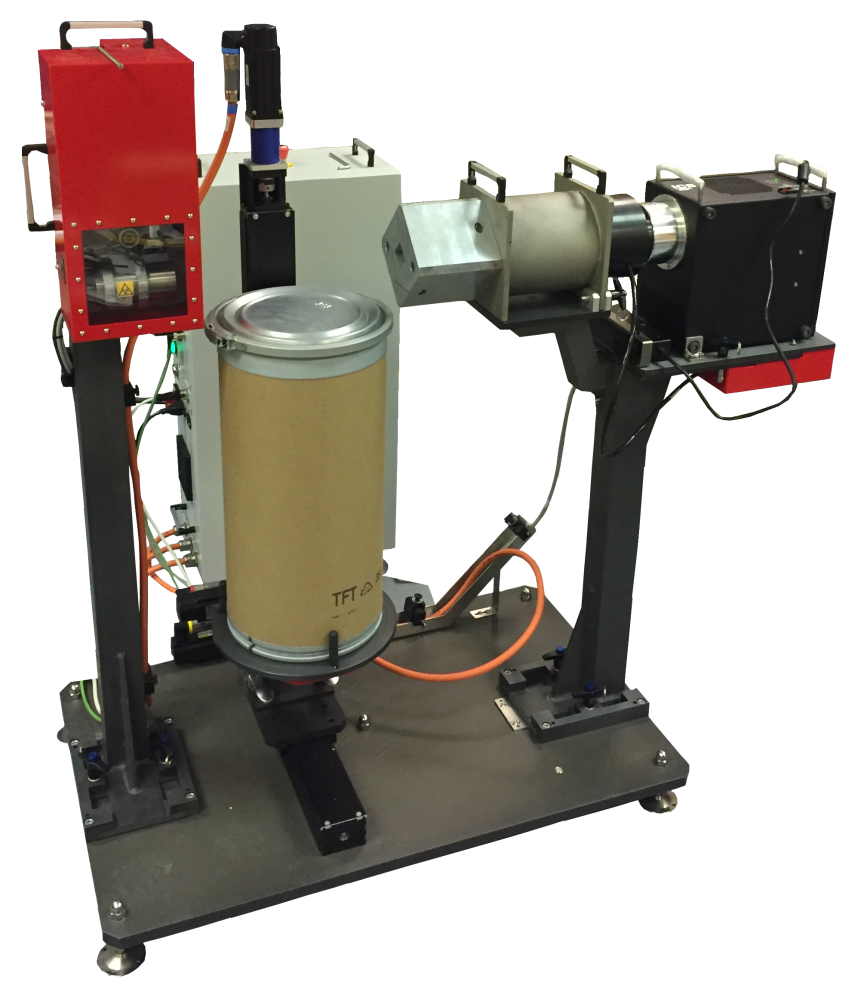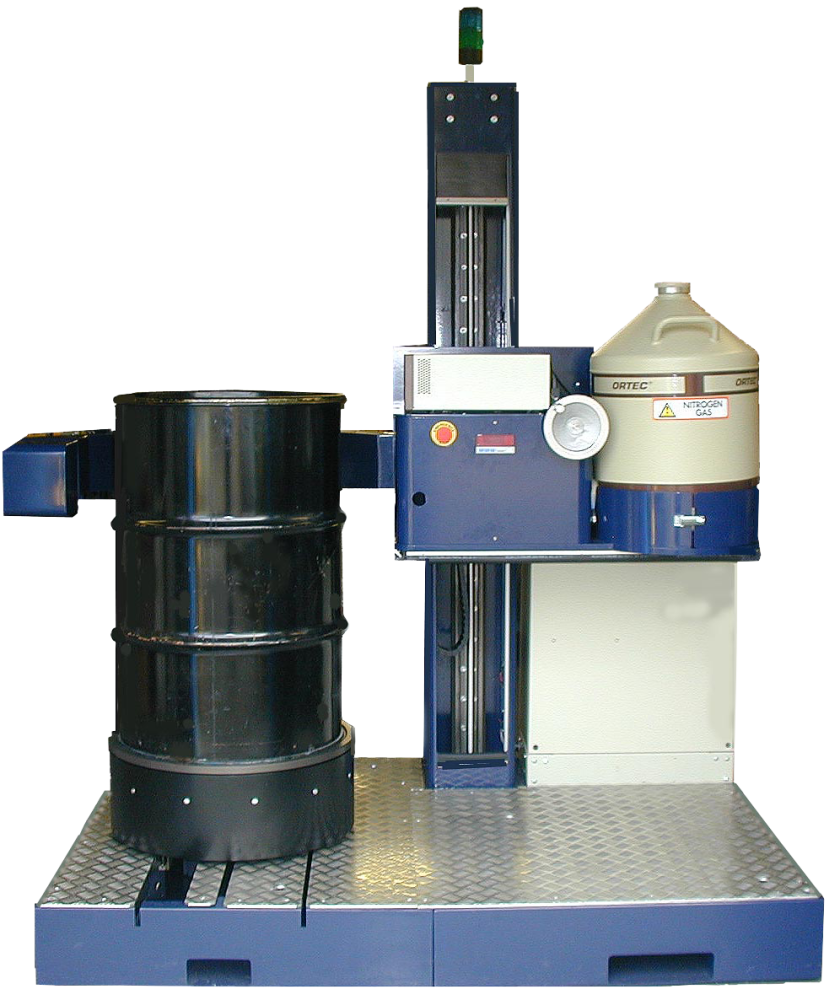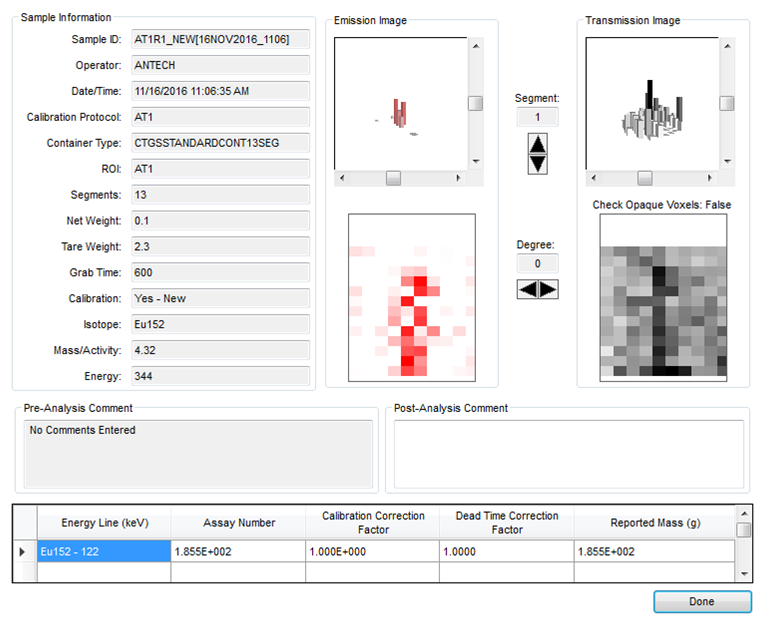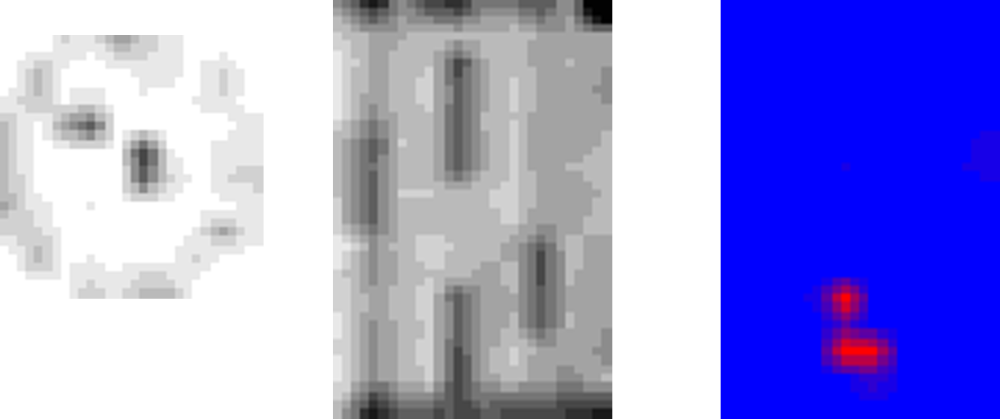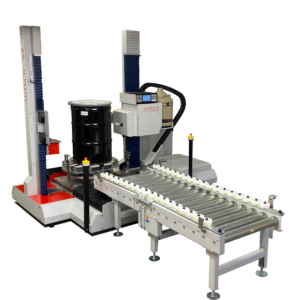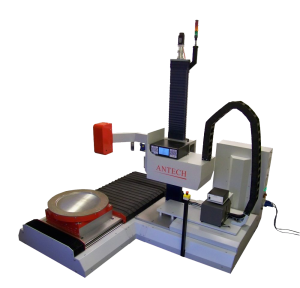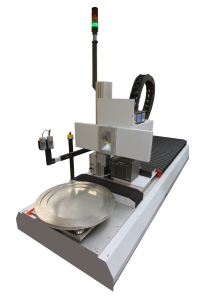The ANTECH G3800 Series of instruments utilises the Tomographic Gamma Scanner (TGS) approach (ASTM C1718) for the non-destructive assay of samples containing gamma emitting materials. Compliant with ASTM C1718, the ANTECH TGS divides the drum into cubic volume elements, known as voxels, employing maximum likelihood algorithms to determine the distribution of both activity and attenuation within the drum. This enables a 3D visual representation of the drum matrix and activity to be determined and a high accuracy assay of the drum to be completed. However, due to the high levels of collimation, typical measurement times are high and require a higher count rate drum to be effectively deployed.
- One instrument provides total assay result combining TGS measurement of uranium, plutonium and other radionuclides with plutonium isotopic ratio analysis using LANL PC/FRAM code.
- Incorporates Tomographic Gamma Scanner (TGS), Segmented Gamma Scanner (SGS) and Plutonium Isotopic Ratio Measurement capability in one instrument.
- TGS technique meets WIPP measurement and QA requirements.
- Accuracy and precision sufficient to meet safeguards, shipping and disposal requirements
- Measures samples with Am²⁴¹ content that cannot be measured using neutron techniques.
- A single calibration constant can be employed for each radionuclide determined due to the bias reduction inherent in the TGS technique.
- Provides tomographic maps of absorbers and sources in heterogeneous matrices.
Benefits
- Combined rotational and horizontal motion.
- Automatic gamma energy calibration using a transmission source.
- Quality Control check measurements.
- Adjustable collimator for different sample sizes.
- Compatible with drums and smaller cans.
Features
-
Description
The G3850 Tomographic Gamma Scanner (TGS) uses transmission corrected, single photon emission computerised axial tomography to determine the spatial distribution and quantity of radionuclides in a drum or can. This High Resolution Gamma Spectroscopy technique (HRGS) represents a considerable advance over the segmented gamma scanning technique by implementing a simple translation axis in addition to vertical scanning and rotation axes.
The TGS was developed by the Los Alamos National Laboratory (LANL) in the early 1990s for the United States’ Department of Energy. A transmission source allows the determination of a 3-D spatial map of the attenuation coefficient at any energy by interpolating between the gamma peaks of transmission source at several energies. Once the attenuation coefficient maps have been established for the sample, emission tomography is used to determine the distribution of selected radioisotopes within the sample. Two pass (transmission followed by emission) measurements are performed.
-
Specifications
Sample Size220L (55 US Gallon) and 340L (85 US Gallon) drum.
Smaller Can options available.Detection Efficiency<40%Digital MCADSPEC-50AccuracyTypically better than 10% for measurement of cans and 20% for matrices with average density 2 g/cm3, better than 10% for metal scrap matricesTransmission SourceTypically Eu¹⁵², other options available.

